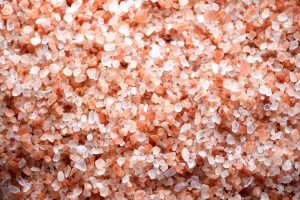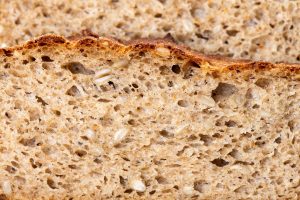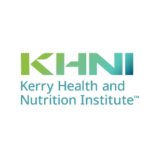An essential part of global sustainable nutrition strategies is to reduce the amount of nutrients linked to poor health, like sodium, saturated fat, and sugar, in foods. New benchmarks from WHO provide actionable targets for sodium reduction.
 The World Health Organization recently released a new set of global benchmarks for sodium levels in more than 60 food categories that will help countries reduce sodium contents in foods to improve diets and save lives. This is an exciting development for nutrient reformulation because global targets have never been published before. The sodium content of foods can vary between different countries, so the WHO’s harmonized global benchmarks will show countries how they can progressively lower their targets, based on their local food environments, and encourage industry to lower the sodium content in processed foods accordingly and advance toward the WHO goal of 30% reduction in global salt/sodium intake by 2025.
The World Health Organization recently released a new set of global benchmarks for sodium levels in more than 60 food categories that will help countries reduce sodium contents in foods to improve diets and save lives. This is an exciting development for nutrient reformulation because global targets have never been published before. The sodium content of foods can vary between different countries, so the WHO’s harmonized global benchmarks will show countries how they can progressively lower their targets, based on their local food environments, and encourage industry to lower the sodium content in processed foods accordingly and advance toward the WHO goal of 30% reduction in global salt/sodium intake by 2025.
From: New WHO benchmarks help countries reduce salt intake and save lives. World Health Organization; 2021
Most people consume double the WHO-recommended 5g of daily salt intake, putting themselves at greater risk of the heart diseases and strokes that kill an estimated 3 million people each year.
“Most people don’t know how much sodium they consume, or the risks it poses,” said Dr Tedros Adhanom Ghebreyesus, WHO Director-General. “We need countries to establish policies to reduce salt intake and provide people with the information they need to make the right food choices. We also need the food and beverage industry to cut sodium levels in processed foods. WHO’s new benchmarks give countries and industry a starting point to review and establish policies to transform the food environment and save lives.”
The WHO Global Sodium Benchmarks target a wide range of categories of processed and packaged food products that significantly contribute to overly salty diets. Processed and packaged bread, savoury snacks, meat products and cheese are among the categories of high-sodium food products identified for the new global benchmarks.
Reducing sodium content by reformulating processed foods is a proven strategy to reduce population sodium intake, particularly in places where consumption of processed foods is high. It can also prevent processed foods from becoming a major source of sodium in countries where consumption of these manufactured foods may be rapidly increasing.
The guidance includes comprehensive targets for 18 different food categories and 97 subcategories, including subcategories like soups, plant-based meat analogues, frozen legumes, cooking sauces, etc. You can view the full guidance document here.
Research has shown sodium reformulation to be effective at reducing sodium intakes of different populations, so actions in line with these benchmarks can have a true impact on public health.
Sodium’s role in food – why is sodium reduction difficult?
Sodium performs multiple roles within foods and beverages, including:
-
- Controlling microbial growth to reduce risk of spoilage or foodbourne illness
- Taste and texture
- Leavening
- Fermentation
This means reducing sodium does not just influence the salty taste of a food, but how a baked good rises, effectiveness of fermentation, etc. Reducing salt can also impact other flavour besides saltiness. Sourness and bitterness can increase, and umami sensations can be changed.
What are some strategies to overcome sodium reduction challenges?
Sodium reduction requires a comprehensive approach from companies striving to meet the WHO’s sodium reduction targets:
Balanced taste must be built back into a foods. Salt alternatives, like potassium chloride, often bring their own taste challenges. Flavours with modulating properties and yeast extracts are other possible solutions that can build back some of the balanced taste and mouthfeel seen at full sodium levels, or mask off-notes from sodium alternatives.
Food safety must be guaranteed and spoilage must be addressed to maintain shelf life. Salt keeps the water activity in foods low, which limits microbial growth. When salt is removed, alternative ingredients like preservatives must be used to limit pathogen and spoilage organism growth. Many consumers do not want to see artificial preservatives in their food, adding another challenge to sodium reduction. Fermented ingredients for natural preservation is one solution that is becoming more common.
 To replace sodium’s role in leavening for foods like bread, pizza crust, and cakes, chemical leavening is often used. Baking soda is one example of a chemical leavening agent that contributes sodium to a food. Chemical leavening agents that are free of sodium, like monocalcium phosphate, are often on lists of ingredients companies do not allow in foods due to consumer clean label preferences. Innovation in the clean label leavening agent space is ongoing and is an area of opportunity as sodium reduction targets become more common.
To replace sodium’s role in leavening for foods like bread, pizza crust, and cakes, chemical leavening is often used. Baking soda is one example of a chemical leavening agent that contributes sodium to a food. Chemical leavening agents that are free of sodium, like monocalcium phosphate, are often on lists of ingredients companies do not allow in foods due to consumer clean label preferences. Innovation in the clean label leavening agent space is ongoing and is an area of opportunity as sodium reduction targets become more common.
FDA following suit
The US Food and Drug Administration has issued new voluntary sodium reduction goals for the food and beverage industry in October 2021. You can read the full guidance information here. Given the push globally to reduce intake, these are shorter-term targets of 2.5 years compared to those issued in the past. The approach supports sodium reduction efforts already made by industry, provides common targets for defining and measuring progress, and provides companies with the flexibility and time to meet these targets. You can read about voluntary targets from other countries in our article Salt and Health – What is Being Done Globally to Reduce Salt Intake?.
From the FDA:
-
- There are 16 overarching categories with individual sodium targets for 163 subcategories of food in recognition that a one-size approach does not fit all.
- The targets in the final guidance are designed to support decreasing average daily sodium intake by about 12 percent—from approximately 3,400 milligrams (mg) to 3,000 mg.
- The targets take into consideration the many functions of sodium in food, including taste, texture, microbial safety and stability. The targets do not address naturally occurring sodium or salt that individuals add to their food.

 We bring the voice of science to some of the most challenging questions facing the food and beverage industry day to day through our network of over 1000 Kerry scientists, external collaborators, and our Scientific Advisory Council. Our content comes straight from scientists and experts in nutrition, taste, food, and sensory sciences to make sure we are providing up-to-date, credible information to guide people shaping the future of food.
We bring the voice of science to some of the most challenging questions facing the food and beverage industry day to day through our network of over 1000 Kerry scientists, external collaborators, and our Scientific Advisory Council. Our content comes straight from scientists and experts in nutrition, taste, food, and sensory sciences to make sure we are providing up-to-date, credible information to guide people shaping the future of food. 

